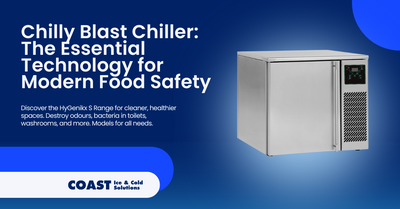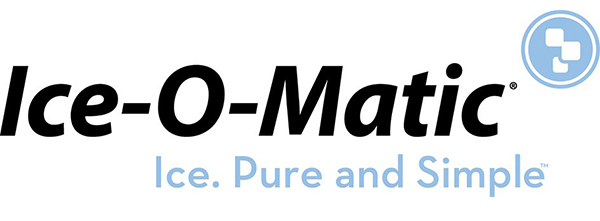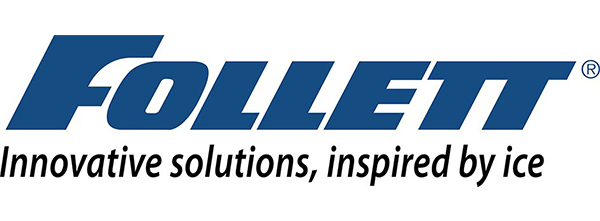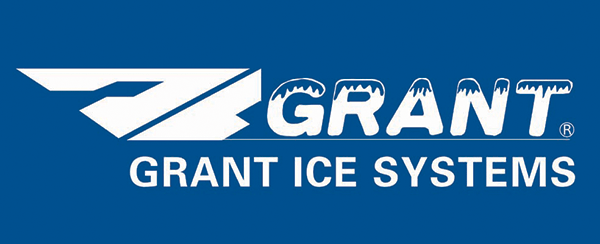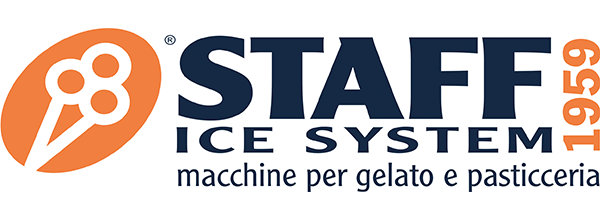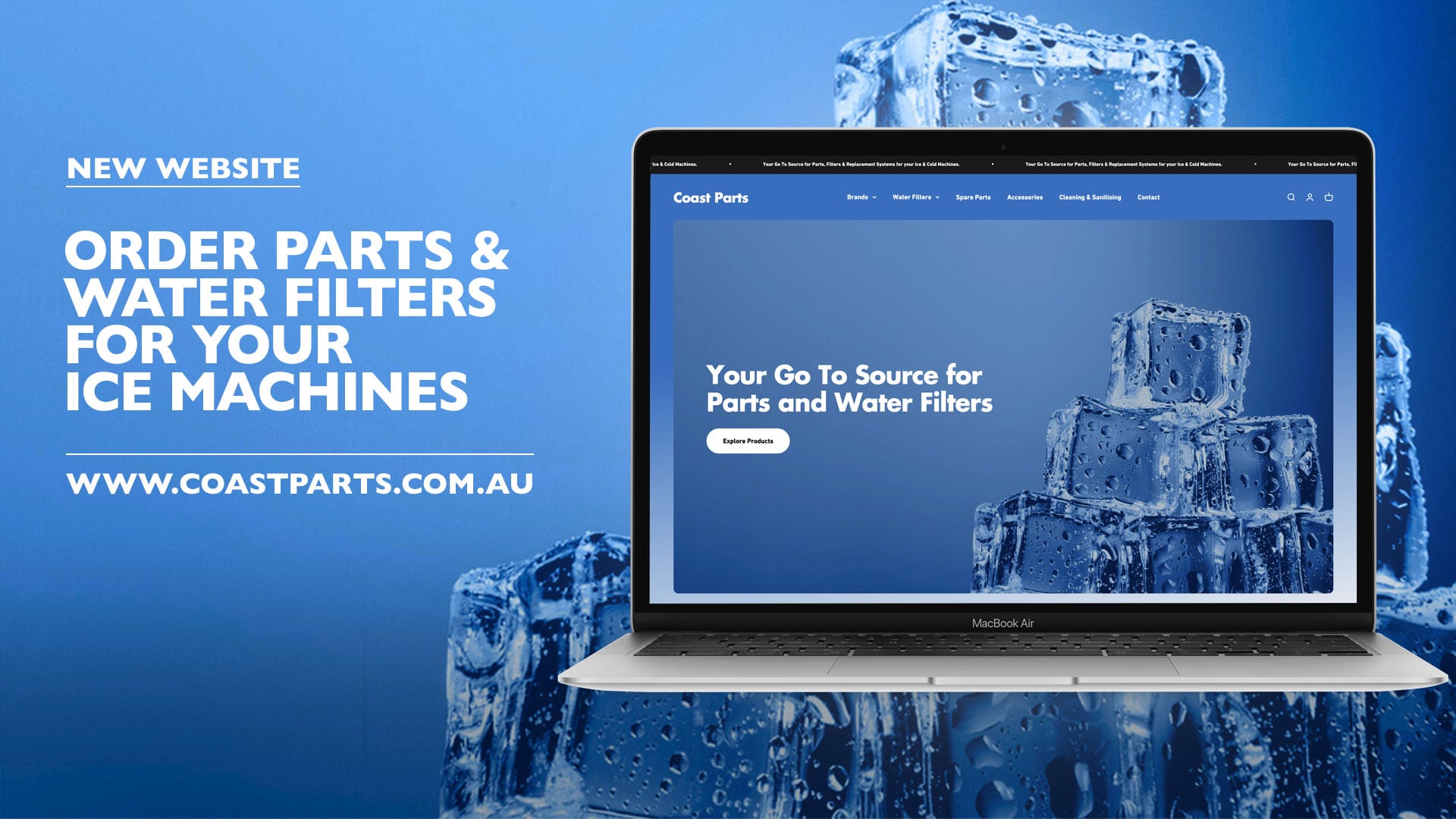Chilly Blast Chiller: The Essential Technology for Modern Food Safety
The Coast Team on 4th Mar 2025
Maintaining food safety while preserving quality presents a constant challenge in today’s food service industry. The window between cooking and safe storage—commonly known as the temperature danger zone—remains one of the most critical control points in any food operation. Traditional cooling methods often struggle to move food through this danger zone quickly enough, potentially compromising both safety and quality.
Blast chilling technology has revolutionised this process by dramatically reducing cooling times, allowing businesses to maintain compliance with increasingly stringent food safety regulations while enhancing product quality and extending shelf life. This advancement represents not just a technological improvement but a fundamental shift in how food businesses approach their cooling processes.
The Australian food service industry faces unique challenges with climate variations and remote locations demanding reliable, efficient cooling solutions. As regulations continue to evolve, having proper blast chilling capabilities has transitioned from a luxury to a necessity for operations of all sizes.
Understanding Blast Chilling: The Science Behind the Technology
Blast chilling operates on a simple yet powerful principle: rapidly moving air at precisely controlled temperatures to quickly extract heat from freshly cooked food. Unlike conventional refrigeration that might take hours to cool food safely, blast chillers can reduce core temperatures from cooking temperatures (typically around 75°C) to safe storage temperatures (3°C or below) in a fraction of the time.
This rapid temperature reduction is critical because it minimises the time food spends in the bacterial growth danger zone (between 5°C and 60°C). When food cools slowly through this range, bacteria can multiply rapidly, potentially doubling every 20 minutes under ideal conditions. By swiftly moving through this zone, blast chillers effectively inhibit bacterial proliferation while preserving nutritional integrity and sensory qualities.
The technology employs powerful fans that circulate cold air at high velocities across food surfaces, creating a consistent cooling environment. Advanced models like the Friulinox series feature precise temperature management systems that monitor and adjust cooling parameters throughout the process, ensuring optimal results regardless of food type or volume.
The benefits extend beyond safety—rapid cooling helps maintain moisture content, preserving food's natural texture and preventing the formation of large ice crystals that can damage cellular structures. This preservation of quality represents a significant advantage over conventional cooling methods that often result in dried-out, less appealing food products.
The Chilly Blast Chiller: Features That Make a Difference
The Chilly Blast Chiller stands out in the market through its combination of user-friendly design and sophisticated engineering. At its core, the system features intuitive controls that simplify operation even for staff with minimal technical training. The control panel includes clear LED indicators that display cycle information, with L1 showing time, L2 indicating negative blast chilling cycle selection, and L3 signalling cycle progress or storage phase status.
The precision temperature management capabilities allow operators to achieve consistent results across various food types. This adaptability proves particularly valuable in diverse kitchen environments where a single piece of equipment must handle everything from delicate pastries to dense protein dishes.
Constructed with durability in mind, the Chilly Blast Chiller features monoblock construction with stainless steel interiors and Scotch Brite satin finish exteriors. High-density, CFC and HCFC-free polyurethane insulation (42 kg/m³) ensures energy efficiency while maintaining precise internal temperatures. Self-closing doors with opening position blocks at 100° and magnetic gaskets on all four sides further enhance operational efficiency and temperature stability.
The system incorporates indirect-flow electric fans made of composite materials, designed to provide consistent airflow across products. Technical components include copper-aluminium evaporating coils treated with non-toxic epoxy resin through cataphoresis painting, and copper condensing coils with high thermal efficiency aluminium fins. These engineering choices reflect a commitment to both performance and longevity.
Maintenance accessibility represents another thoughtful design element, with easily accessible evaporators and tool-free removable stainless steel rack structures simplifying routine cleaning and service. This attention to maintenance requirements helps ensure consistent performance throughout the equipment's operational life.
Environmental Considerations
Sustainability has become increasingly important for Australian food businesses, both from ethical and commercial perspectives. The Chilly Blast Chiller contributes to environmentally responsible operations through several key features:
The R290 ecological refrigerant gas used in these units has zero ozone depletion potential and very low global warming potential compared to conventional refrigerants. This helps businesses reduce their environmental footprint while staying ahead of evolving regulations on refrigerant use.
The automatic defrost and defrost water self-evaporating system operates without using additional energy, further enhancing efficiency. The high-efficiency components, including copper-aluminium evaporating coils and high thermal efficiency condensing coils, optimise performance while minimising energy consumption.
For businesses looking to showcase their commitment to sustainability, these eco-friendly features represent a valuable selling point that resonates with environmentally conscious consumers across Australia.
Comparing Friulinox Models: BF030AE-R290 and CF031AE-R290
The Friulinox range available through Coast Distributors includes two standout models that exemplify the brand's commitment to technical excellence: the BF030AE-R290 and CF031AE-R290.
Friulinox BF030AE-R290
The BF030AE-R290 represents the compact option in the range, ideal for smaller kitchens or operations with limited space. Despite its smaller footprint, this model delivers impressive performance capabilities:
-
Capacity: 3 x 2/3 GN trays
-
Dimensions: 560mm (W) x 560mm (D) x 520mm (H)
-
Weight: 47kg (52kg with packaging)
-
Yield per cycle: 8kg for +90°C to +3°C chilling / 5kg for +90°C to -18°C freezing
-
Power supply: 230V / 1 Phase / 50Hz with maximum consumption of 3.4A
-
Cooling power: 487W with maximum electric power of 0.587kW
The smaller depth makes this model particularly suitable for installation against walls in tight spaces, while still providing sufficient capacity for most small to medium-sized operations.
Friulinox CF031AE-R290
The CF031AE-R290 offers increased capacity with the same width and height as the BF030AE, but with greater depth to accommodate larger trays:
-
Capacity: 3 x 1/1 GN trays
-
Dimensions: 560mm (W) x 700mm (D) x 520mm (H)
-
Weight: 52kg (58kg with packaging)
-
Yield per cycle: 8kg for +90°C to +3°C chilling / 5kg for +90°C to -18°C freezing
-
Power supply specifications match the BF030AE model
-
The cooling performance specifications are identical to the BF030AE
The additional depth allows for standard 1/1 GN trays, which are commonly used in commercial kitchens throughout Australia, potentially simplifying workflow integration.
Both models share key structural characteristics, including:
-
HACCP alarm indication
-
Core probe with 1 measuring point for precise temperature monitoring
-
Stainless steel construction inside and out (with Scotch Brite satin finish on exterior surfaces)
-
Self-closing doors with opening position block at 100° and magnetic gaskets on all four sides
-
Full-length ergonomic stainless steel handles
-
Rounded cell corners for easy cleaning
These shared features contribute to both durability and hygiene across both models, ensuring reliable performance in demanding commercial environments.
Practical Applications Across Australian Industries
The versatility of the Chilly Blast Chiller makes it an invaluable tool across numerous sectors of the Australian food industry, each benefiting from its capabilities in unique ways.
Restaurants and Catering
In restaurants and catering operations, blast chillers have transformed preparation workflows by enabling advance production without quality compromise. Chefs can prepare components or entire dishes during less busy periods, blast chill them to preserve quality, then finish and serve during peak service times. This capability not only improves operational efficiency but also enhances consistency and reduces waste—critical considerations for businesses operating on tight margins.
For example, a busy Melbourne restaurant might prepare signature sauces and base components in the morning, rapidly chill them using the BF030AE-R290, and then finish dishes to order during dinner service—maintaining the fresh-made quality while streamlining kitchen workflow during peak hours.
Event caterers particularly benefit from the ability to prepare large quantities of food in advance, chill it safely, and then transport and regenerate it at the event location without compromising quality. This capability expands menu options and service capabilities, allowing caterers to deliver restaurant-quality food experiences at remote locations throughout Australia.
Bakeries and Patisseries
Bakeries and patisseries utilise blast chillers to rapidly cool delicate items that would otherwise deteriorate in conventional refrigeration. The quick cooling preserves the structure of pastries and prevents condensation issues that can ruin carefully crafted finishes. For artisanal producers, this technology enables small-batch production while maintaining the quality standards that distinguish their products.
A boutique Sydney bakery might use their CF031AE-R290 to rapidly chill delicate mousse cakes or chocolate work, preventing crystallisation and texture degradation that would occur with slower cooling methods.
Healthcare Facilities
Healthcare facilities face particularly stringent requirements for food safety and nutritional preservation. The Chilly Blast Chiller helps these institutions maintain compliance while ensuring that vulnerable populations receive meals that are both safe and appetising. The ability to rapidly chill without compromising texture or flavour proves especially important in settings where patient satisfaction directly impacts recovery outcomes.
A regional hospital in Queensland might use blast chilling technology to prepare and safely store meals that maintain nutritional integrity and palatability for patients with compromised immune systems, where food safety is particularly critical.
Hospital kitchens can prepare meals in advance, chill them rapidly, and then reheat them as needed for different patient meal times—maintaining nutritional value while ensuring microbiological safety. The HACCP alarm indications and precise temperature management capabilities also simplify compliance documentation, an important consideration in heavily regulated healthcare environments.
Food Manufacturing and Processing
Food manufacturers and processors benefit from the precise temperature control and rapid cooling capabilities when developing new products or preparing components for assembly. The technology helps maintain quality standards while meeting production timelines, particularly important for businesses supplying major retailers with strict delivery requirements.
A specialty food manufacturer in Adelaide could use the blast chilling process to rapidly cool prepared meals before packaging, extending shelf life while maintaining the homemade quality that differentiates their product line from mass-produced alternatives.
The ability to rapidly chill products before packaging helps preserve freshness, extend shelf life, and maintain visual appeal—factors that significantly influence consumer purchasing decisions. For specialty producers creating premium food items, the superior preservation of flavour and texture achieved through blast chilling can be a key differentiator in competitive markets.
Educational Institutions
Educational institutions with culinary programs find these units invaluable for teaching proper food safety techniques while demonstrating professional kitchen workflows. Students gain hands-on experience with industry-standard equipment, better preparing them for careers in Australia's competitive hospitality sector.
A culinary school in Perth might incorporate blast chilling technology into curriculum to teach students both the science of food safety and practical applications of modern kitchen technology, preparing graduates for contemporary professional environments.
Implementation Best Practices for Maximum Benefit
Successfully integrating blast chilling technology into existing operations requires thoughtful planning and proper training. Businesses should begin by assessing their specific cooling needs, considering both current requirements and potential future growth. This evaluation helps determine the appropriate model and capacity for their unique situation.
Strategic Placement and Integration
When installing a Chilly Blast Chiller, consider its position within your production workflow. Ideally, the unit should be located near cooking equipment to minimise the time and distance for transferring hot food to the chiller—reducing the time food spends in the temperature danger zone and streamlining kitchen operations.
However, the unit should not be placed immediately adjacent to heat-producing equipment, as this can compromise efficiency. Ensuring adequate ventilation around the unit is also essential, particularly for the condenser coil, which needs unrestricted airflow to operate efficiently in Australia's often warm climate conditions.
The compact dimensions of both the BF030AE and CF031AE models (just 560mm wide and 520mm high) make them suitable for installation under counters or workbenches in many kitchens, helping maximise space utilisation without sacrificing accessibility or performance.
Loading Techniques and Spacing
Proper loading techniques significantly impact performance efficiency. Food should be arranged to maximise air circulation, with items spaced appropriately rather than overcrowded. Shallow containers generally yield better results than deep ones, as they allow for more efficient heat transfer.
For best results, hot foods should be portioned appropriately before chilling—large, dense items may need to be divided into smaller portions to ensure rapid and consistent temperature reduction throughout. The core probe should be correctly positioned in the thickest part of the food to ensure accurate temperature monitoring.
For operations handling diverse product types, developing standard operating procedures for different food categories ensures consistent results.
Temperature Monitoring and Documentation
Temperature monitoring represents a critical aspect of effective implementation. While the Chilly Blast Chiller includes built-in monitoring capabilities, establishing verification protocols helps ensure system accuracy and provides documentation for compliance purposes. Regular calibration of the core probe maintains measurement precision throughout the equipment's lifespan.
Australian food producers operating under HACCP principles particularly value the Chilly Blast Chiller's alarm indication feature, which helps maintain compliance with safety protocols by alerting operators to any temperature deviations that might compromise product safety or quality.
Effective Cleaning and Maintenance Routines
Regular cleaning is vital for both food safety and operational efficiency. The stainless steel interior and rounded cell corners of the Chilly Blast Chiller models are designed to facilitate thorough cleaning, but consistent maintenance is still essential.
Daily cleaning should include wiping down interior surfaces with a food-safe sanitiser and checking door seals for food debris that might compromise the magnetic closure. The self-closing door mechanism should be tested regularly to ensure it operates correctly, as proper door closure is essential for temperature maintenance and energy efficiency.
Monthly maintenance should include checking and cleaning the condenser coil, which can accumulate dust and debris that restrict airflow and reduce cooling efficiency. This is particularly important in busy kitchen environments where flour, oil particles, and other airborne contaminants are common.
Scheduling professional servicing at recommended intervals helps prevent unexpected downtime and extends equipment life.
Staff Training
Staff training should cover not only operational procedures but also the underlying principles of blast chilling technology. When team members understand why specific protocols matter, they're more likely to follow them consistently. This knowledge foundation proves particularly important in high-turnover environments common in the Australian hospitality industry.
The automatic-reset thermal circuit breaker protects the compressor from damage during power fluctuations, but staff should still be trained to avoid unnecessarily opening the door during cooling cycles, as this increases energy consumption and can extend chilling times.
Future Trends in Cooling Technology
The blast chilling sector continues to evolve, with several emerging trends likely to shape future developments. Increasing focus on sustainability drives innovations in refrigerant technologies and energy efficiency. The R290 ecological refrigerant used in the Friulinox models represents an early adoption of this trend, with further advancements expected as environmental regulations continue to tighten.
Integration with Digital Kitchen Management
The next generation of blast chillers is increasingly likely to feature enhanced connectivity options, allowing integration with broader kitchen management systems. This would enable real-time monitoring of chilling cycles, automatic HACCP documentation, and predictive maintenance alerts—benefits that streamline operations and simplify compliance.
While the current Chilly Blast Chiller models feature standalone control systems, their robust fundamental design makes them compatible with future upgrades and adaptations as digital kitchen management continues to evolve in the Australian food service industry.
Energy Efficiency Innovations
As energy costs continue to rise across Australia, efficiency innovations become increasingly valuable. Future developments in refrigeration technology are likely to focus on further reducing energy consumption while maintaining or improving performance—trends that align well with the current Chilly Blast Chiller's already efficient design.
The existing R290 ecological refrigerant gas used in these units positions them well within this trend, as environmental regulations continue to favour natural refrigerants with minimal global warming potential.
Customisation Options
Customisation options are expanding to meet the diverse needs of different food service operations. Manufacturers are developing more flexible programming capabilities that allow operators to create specific cycles for particular products or preparation methods. This specialisation helps optimise results across varied menu offerings.
The modular approach of the Friulinox design philosophy suggests that future upgrades and enhancements will be compatible with existing infrastructure, allowing businesses to evolve their capabilities without complete system replacement.
Space Efficiency
Space efficiency remains a critical consideration, particularly in Australian urban centres where real estate premiums continue to rise. The compact footprint of units like the BF030AE and CF031AE reflects this ongoing trend toward maximising functionality within limited space constraints.
As kitchen technology continues to advance, we can expect to see blast chillers that offer even greater capacity-to-footprint ratios, allowing businesses to maximise cooling capabilities without sacrificing valuable operational space.
Conclusion: Investing in Quality and Safety
The Chilly Blast Chiller represents more than just a piece of kitchen equipment—it embodies an approach to food preparation that prioritises both safety and quality. By dramatically reducing cooling times while preserving product integrity, these systems help businesses meet regulatory requirements while enhancing customer satisfaction.
The technical sophistication of the Friulinox models available through Coast Distributors provides Australian food businesses with reliable, efficient cooling solutions backed by comprehensive support. The two-year parts warranty demonstrates confidence in the equipment's durability and performance under commercial conditions.
As food safety standards continue to evolve and consumer expectations rise, investing in proper blast chilling technology becomes increasingly essential for operations of all sizes. The initial investment delivers ongoing returns through extended product shelf life, reduced waste, improved operational efficiency, and enhanced quality consistency.
For Australian businesses looking to enhance their cooling operations and ensure they're equipped for both current challenges and future opportunities, the Chilly Blast Chiller offers a compelling combination of performance, reliability, and value. Explore the full range of Chilly Blast Chillers and find the perfect model for your specific requirements by contacting Coast Distributors, Australia's trusted source for premium commercial refrigeration solutions.
Whether you're interested in the compact BF030AE for smaller operations or the larger-capacity CF031AE for higher-volume needs, Coast Distributors provides expert guidance and support to ensure you select the right equipment for your unique operational requirements. Improve efficiency, reduce waste, and maintain the highest quality standards with reliable water chillers designed specifically for Australian commercial environments.

